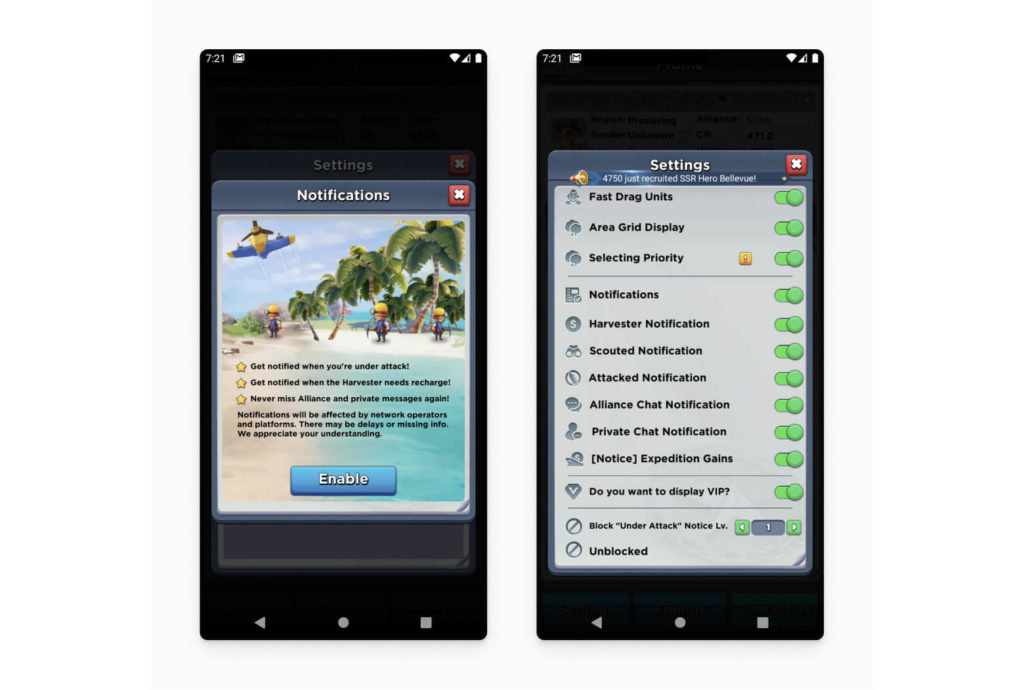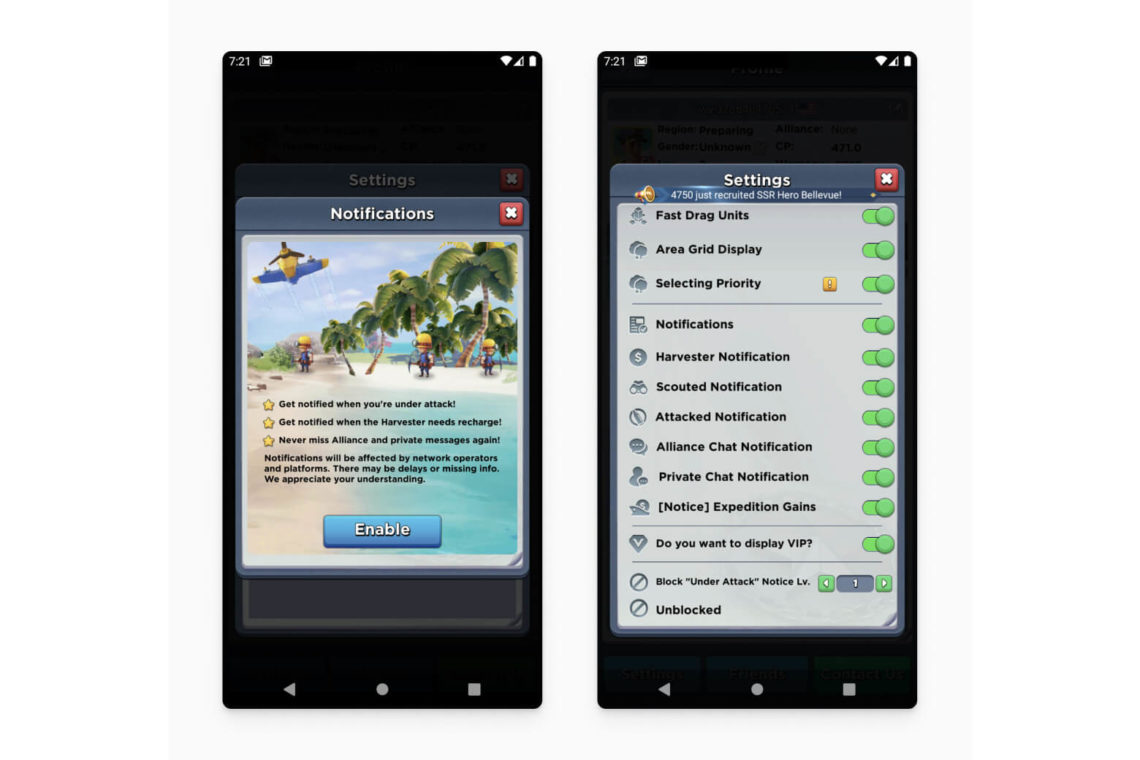
Our business was Hiptic Games, a mobile gaming firm, prior to Mok.one. Our time at Hiptic opened our eyes to the need for a messaging platform that is easier to use, more dependable, and more potent in order to increase user engagement.
We created Mok.one in part with game developers in mind. The average Day 28 retention for the top 25% of mobile games is merely 4%, and the cost of gaining a customer who finally makes a purchase is over $40 USD. However, the great majority of mobile games still don’t follow the fundamental best practises for boosting user engagement and retention via messaging.
The four primary user-engagement channels that every mobile game studio may wish to use are Push Notifications, In-App Messaging, Email, and SMS. In this article, we’ll go through each channel’s best practises. To demonstrate how game creators can use these strategies, we’ll use the Mok.one platform, but the lessons and best practises are applicable regardless of the implementation strategy you decide on.
What about requesting an email?
The great majority of mobile games do not ask players for their email, which is a startling discovery. However, when we speak with growth leaders at leading game companies, they unanimously endorse email as a vital channel for re-engagement and boosted sales.
Three main justifications exist for gathering user email:
- Email is a great medium to employ in conjunction with notifications to increase user engagement. Emails operate as a second channel to keep users engaged, especially since not all users opt-in to notifications. Emails are incredibly inexpensive to send, and Mok.one pricing scales reasonably for both small and large enterprises.
- Email ads that target adult gamers, who are more inclined to make in-game purchases, do very well. One product manager from a major game firm observed a 20% increase in revenue from top spenders.
- Email is a critical identifier for retargeting users now that IDFA has been deprecated. Displaying advertisements to players on websites like Facebook is a typical tactic for encouraging user re-engagement. Email now serves as the greatest user identifier for targeted advertising thanks to Apple’s plan to deprecate the Identifier for Advertisers (IDFA) in early 2021.
It might be challenging to get people to give their email addresses, therefore it’s critical to offer users both content and incentives. Facilitating sign-in through Facebook or other services can speed up the procedure and eliminate the need to verify email addresses.
A key point is that recent policy changes by Apple mandate that programmes that offer login through third-party services also offer “Sign in with Apple” as a comparable log in option.
Does SMS make sense?
For good reason, SMS is one of the least popular messaging options for games. Depending on the country, sending an SMS message with a picture can cost 2 cents or more, which adds up rapidly.
However, SMS is a compelling medium to stay in touch with players when employed in games with high player LTVs (Lifetime Values). Compared to other channels, SMS has the highest open rate, and links sent via SMS are opened by roughly 19% of recipients, vs barely 2% or 3% for emails.
The type and quantity of messages to be sent
The notification drip campaign that Hellosaurus has set up to encourage user conversion to their subscription service while dispersing various app updates is quite well done.
Typically, messages from video games fall into one of these three groups:
game activities that have place
Video game news Promotions
It’s imperative to consider the message as an integral aspect of the user experience with your app in each scenario. Users are considerably more likely to block your messages or delete your game entirely if the quality of your communications does not equal the level of their in-game experience.
Games may bring this innovation to the communications experience outside of the game, just as games need creativity to produce an entertaining in-game experience.
Remember that consumers occasionally have hundreds of apps installed on their device, with gamers being the most active users. As a result, any message you send through push, email, or SMS must:
Be apart from the crowd.
To its receiver, be pertinent.
remarks that are too general, like “You haven’t played in a long. are unlikely to have much of an effect on user retention. Come back today. George, your hero is almost at level 10, but personalised messages or those that offer an incentive perform far better. For today’s levels, you will earn double experience points.
The communications channels you use will determine how frequently you send messages, which might vary substantially.
The top apps have discovered that, as long as each push notification contributes to an outstanding overall user experience, there is essentially no limit to the number of push notifications you can send. Making notifications that are not time-sensitive silently delivered is a crucial method. When used well, notifications may become an integral part of your game’s experience, giving users something worthwhile to see when they look at their devices and luring them in at just the perfect moment.
A decent rule of thumb is to send the same number of daily alerts (or emails) as the number of times players open the game for games that are worried about user churn if they send too many messages. Three messages a week, for instance, is a reasonable cap if new users play a game about three times in the first week after installing it.
